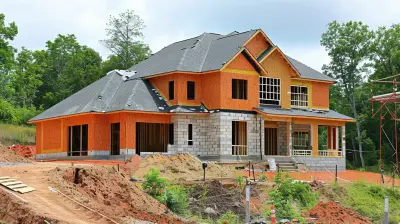1 April 2025
House flipping is like that edge-of-your-seat episode of your favorite TV show—fast-paced, full of unexpected twists, and incredibly satisfying when it all works out. But here’s the catch: flipping houses isn’t just about finding a run-down property, sprucing it up with a coat of paint, and selling it for a hefty profit. It’s a calculated game that demands careful planning, smart decision-making, and—most importantly—leveraging the right tools.
In today’s world, where technology is running the show, digital tools have become the secret sauce for successful house flips. Whether you’re a first-timer dipping your toes into real estate or a seasoned flipper looking to up your game, understanding how to make the most of these tools can save you time, money, and loads of headaches. So, let’s dive in and explore how you can use digital tools to flip houses like a pro. 
Why Digital Tools Are a Game-Changer in House Flipping
Think about it—modern technology has revolutionized almost every industry, and real estate is no exception. Gone are the days when you had to rely on word-of-mouth, outdated listings, or physically visiting every property on your radar. With the right digital tools, you can evaluate properties, analyze market trends, manage renovation projects, and even find potential buyers—all from the comfort of your couch.But why all the hype around digital tools? Well, they’re like the Swiss Army knife of house flipping. They streamline your processes, help you make data-driven decisions, and, most importantly, reduce the risk of costly mistakes. Let’s face it—nobody wants to end up pouring money into a flip that won’t sell. 
Step 1: Use Digital Market Research Tools to Find the Perfect Property
Flipping a house starts with finding the right property, and let me tell you, this step can be tricky. But thanks to digital tools, you can take a lot of the guesswork out of the equation.1.1. Property Search Platforms
Platforms like Zillow, Realtor.com, and Redfin are lifesavers. They let you search for properties based on your budget, location, and preferences. You can even filter by foreclosure status or properties being sold "as-is"—prime flipping opportunities!1.2. Heat Maps and Market Data
Want to know which neighborhoods are hot and which ones are not? Use tools like Mashvisor or Neighborhood Scout to access heat maps, crime rates, school ratings, and market trends. Think of these as your crystal ball—they give you insights into where people want to live and what kind of properties they’re looking for.
Step 2: Crunch the Numbers With Financial Analysis Tools
Before you get carried away with visions of a beautifully flipped house, you need to run the numbers. After all, the goal here is to make a profit.2.1. The 70% Rule
Quick reminder: a good rule of thumb is the 70% rule. You shouldn’t pay more than 70% of a property’s after-repair value (ARV) minus the estimated repair costs. But how do you calculate all those numbers?2.2. ARV and Repair Cost Estimators
Tools like FlipScout or DealCheck can help you here. They make it easy to estimate ARV and repair costs, so you don’t end up spending too much on a property or underestimating expenses. It’s like having a financial calculator specifically designed for house flipping.2.3. Mortgage and Financing Apps
If you’re financing your project, apps like Rocket Mortgage or LendingTree can give you a clear picture of your loan options. Plus, they help you figure out monthly payments and interest rates, so you know exactly what you’re signing up for.
Step 3: Streamline Renovations With Project Management Software
Once you’ve bought the property, it’s time to roll up your sleeves and get to work—or, in this case, let digital tools do the heavy lifting.3.1. Task Management Apps
Renovations can quickly turn chaotic if you’re not organized. Apps like Trello, Asana, or Monday.com let you create to-do lists, assign tasks to contractors, and track progress. Imagine it as a digital sticky-note wall that keeps everyone on the same page.3.2. Virtual Design Tools
Not sure how that open-concept kitchen will look? Use virtual design tools like Planner 5D or SketchUp to create 3D renderings of your renovation ideas. It’s like playing The Sims but in real life!3.3. Budget Trackers
Renovation costs can spiral out of control if you’re not careful. Use budget tracking tools like Mint or YNAB (You Need A Budget) to make sure you’re staying within your limits. Trust me, every penny counts when it comes to flipping.Step 4: Market Your Flip Like a Pro With Digital Marketing Tools
Now comes the fun part—selling your beautifully flipped property. But even the most stunning renovation won’t sell itself. You need to market it effectively.4.1. Real Estate Photography and Videography
People shop for houses with their eyes first, so high-quality visuals are non-negotiable. Use tools like Canva to touch up photos or apps like PhotoUp to virtually stage a room. Want to go the extra mile? Invest in a drone for aerial shots of the property.4.2. Listing Platforms
Post your property on platforms like MLS, Zillow, or Trulia to get maximum exposure. Pro-tip: Write a killer listing description that highlights the unique features of your flip. Instead of saying "updated kitchen," try "brand-new chef’s kitchen with quartz countertops and stainless steel appliances."4.3. Social Media Advertising
Social media isn’t just for cute cat videos—it’s a goldmine for marketing. Use Facebook and Instagram ads to target potential buyers in your area. With tools like Facebook Ads Manager, you can set your budget, define your audience, and track ad performance.Step 5: Analyze and Learn With Post-Sale Tools
The final step in your house-flipping journey is analyzing how things went. Did you hit your profit goals? What could you have done differently?5.1. Analytics Tools
Use platforms like Google Sheets or Excel to track your expenses, profits, and timelines. Some apps, like FlipperForce, even offer built-in analytics tailored for house flipping.5.2. Real Estate Forums and Communities
Join forums like BiggerPockets to share your experiences and learn from other flippers. Think of it as your built-in support group for all things real estate.Pro-Tips for Flipping Success in the Digital Age
- Stay Updated: Technology evolves fast. Keep an eye on new tools and updates to existing platforms.- Don’t Overcomplicate It: Use tools that genuinely add value to your process. If it feels like overkill, it probably is.
- Invest in Education: Many digital tools offer free tutorials or webinars. Take advantage of these to sharpen your skills.
Wrapping It Up
House flipping isn’t just about hammering nails and picking out trendy subway tiles—it’s a data-driven strategy where every decision counts. By leveraging digital tools, you can stay ahead of the curve, make smarter choices, and ultimately maximize your profits.So, whether you’re figuring out the ARV on your first flip or perfecting your marketing strategy for your tenth, remember this: the right digital tools aren’t just nice to have—they’re game-changers.
What are you waiting for? Fire up your laptop, start exploring these tools, and get ready for your next big flip. Who knows? It might just be your most successful one yet.









Renata Ward
This article brilliantly highlights the transformative impact of digital tools in house flipping. By utilizing technology for market analysis, project management, and marketing, investors can streamline processes, minimize risks, and ultimately enhance profitability. A must-read for aspiring flippers!
April 9, 2025 at 8:19 PM